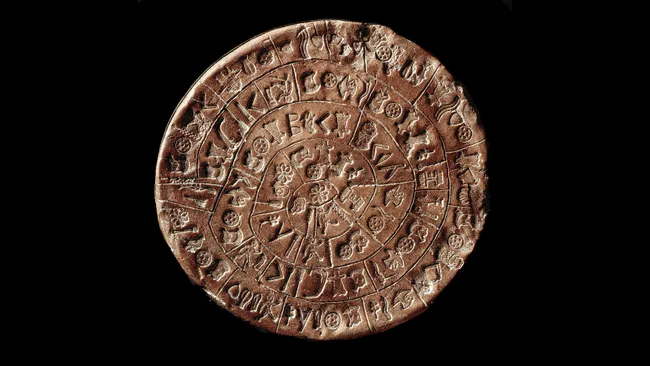Phaistos Disk: 3,000-year-old inscriptions from Crete that have never been deciphered
None of the many interpretations of the Phaistos Disk's inscriptions are universally accepted.
 |
| More than 100 years after its discovery, the Phaistos Disk is still undecipherable. (Image credit: Leemage via Getty Images) |
Name: Phaistos Disk
What it is: A fired clay disk inscribed with symbols that have never been deciphered
Where it is from: The ancient Minoan civilization on the Mediterranean island of Crete
When it was made: More than 3,000 years ago, livescience.com.
What it tells us about the past:
The Phaistos Disk was discovered in 1908 by an Italian archaeologist on Crete. Initially, some scholars thought it was a forgery, but it is now generally accepted as authentic — although some researchers still have doubts.
The Minoans were a Bronze Age people who lived on Crete and nearby islands in the eastern Mediterranean Sea. Their civilization is renowned for its art and architecture, and is thought to have inspired the early Mycenaean civilization on the Greek mainland.
When their astonishing ruins were excavated in the 19th century, the Minoans were named after the mythical king Minos of Greek legends, who kept a Minotaur in a labyrinth under his palace at Knossos on Crete, until the beast was killed by the Athenian hero Theseus. But experts think the Minoans lived on Crete between about 3100 and 1150 B.C. — probably centuries before Minos and Theseus might have lived in the 12th century B.C.
The disk was found in the ruins of a Minoan palace at Phaistos, an archaeological site the south coast of Crete. Measuring roughly 6 inches (15 centimeters) in diameter, it is inscribed with two spirals of symbols, one on each side, which most experts think is a script. But what the symbols say has never been determined, although there have been many attempts.
In total the disk has 241 occurrences of 45 symbols. Some symbols clearly portray people, while others depict animals, plants, weapons, tools and other objects. They are grouped into "words" by vertical strokes, but nothing is known about how the symbols sounded or functioned.
Early interpretations suggested the symbols were an early written form of Greek that described an animal sacrifice carried out in a temple; but a 2004 interpretation suggested they formed a letter about a dispute over land written in the Luwian language of ancient Anatolia (modern Turkey).
Still others propose it was written in Hittite; or Egyptian; or that it was either a prayer to a goddess or a funeral hymn, but written in an unknown language.






Коментарі
Дописати коментар